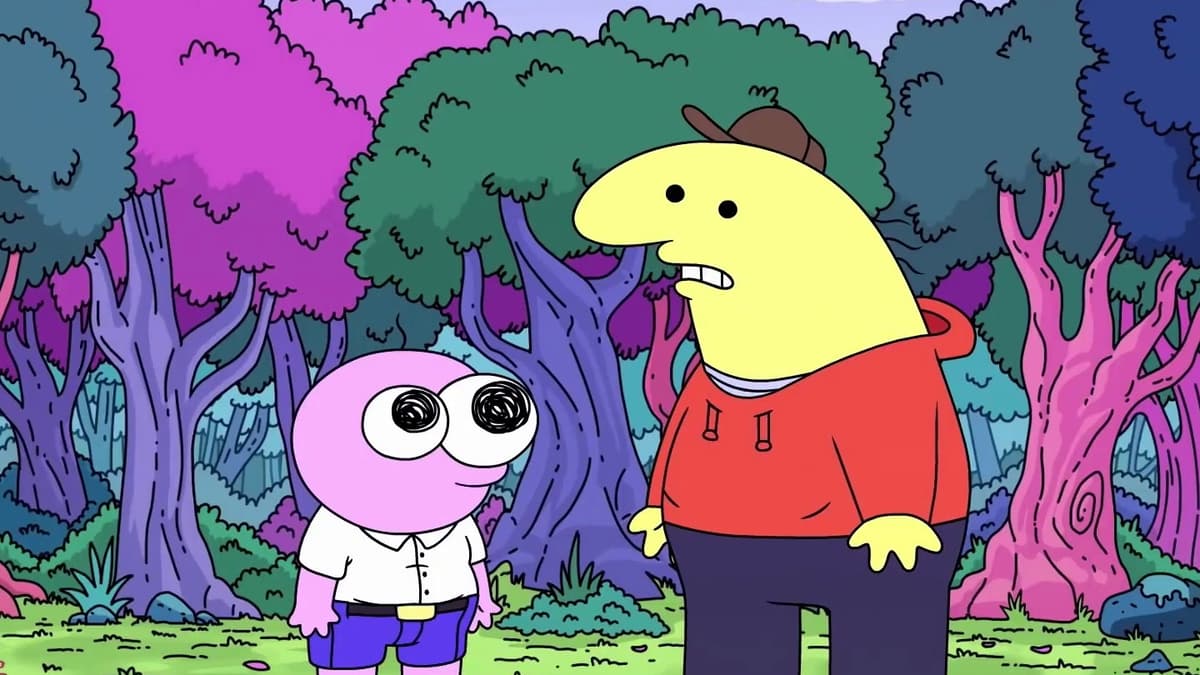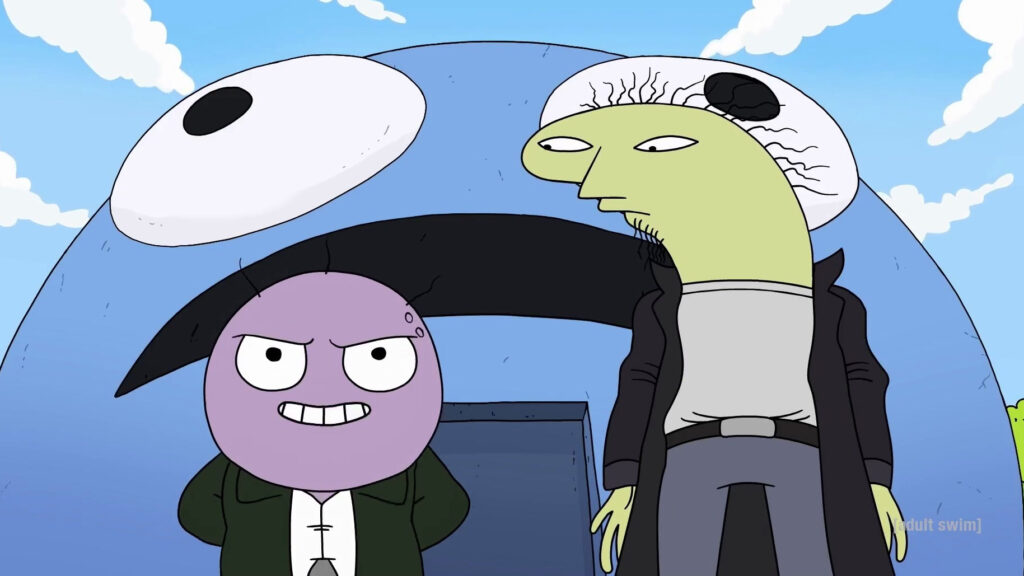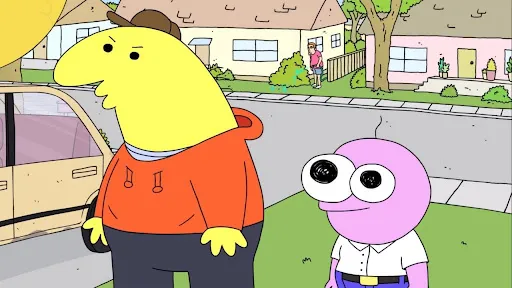‘Smiling Friends’ Is Surreal, Absurd, and Beautiful
The joke rate is quite rapid and the humor derives from the weirdness that’s captivated a generation raised by the internet.

Ten years ago, two series premiered that marked a significant shift for Western animation: Adult Swim’s “Rick and Morty” and Netflix’s “Bojack Horseman.” Both achieved immense popularity and received much acclaim for their snarky humor and in-your-face characters. One aspect that these series have in common is their protagonists being overwhelmed with a deep miserablism, permitting the audience an indulgence. That nihilism prevails and nothing matters is a principle that is now the driving force for adult animation.
“Smiling Friends,” which is also on Adult Swim, has the opposite ethos of “Bojack Horseman,” and for once, it is fun and breezy. It is also weird, hyper-quick and deeply moving. The series introduced us to the frustrated but level-headed Charlie and relentlessly optimistic Pim (voiced by the creators Zach Hedel and Michael Cusack), who work for an agency that helps other people.
These tend to be troubled individuals, canceled celebrities, and even Satan himself. In the pilot episode, which premiered in 2020, Charlie and Pim help a man named Desmond who is literally on the brink of suicide. In another, a mad scientist has an intense relationship with his rotoscoped brother. In a third episode, Pim and Charlie have been assigned to ensure that a morbidly obese president with the mind of a child can retain power.
The plot for some of these episodes has a certain formula, but the direction of every ten minute long episode can be unpredictable. It could be a bottle episode where all the characters go to Brazil, but find out that Pim did not book the hotel, and thus are trapped at the airport. It could be a UFO episode where they are abducted by aliens who are basically party animals. Yet each episode still retains its focus and gravitas, where all the characters triumph over the adversity of their worlds.

One might argue that commentary by “Smiling Friends” on current issues like cancel culture and mental illness, particularly when the Friends have to rescue an entertainer named Mr. Frog from a career collapse, is timely, but it’s never quite on the nose. And this makes for some hilarious punchlines. Examples include the Halloween special, where Pim gets chased by a demon and ends with the creature being obliterated because the partygoers think he’s wearing blackface. There’s also when Mr Frog saves his career by eating the executive producer who fired him.
The episode where the Friends meet their competing neighbors, the Frowning Friends, who aim to depress as many people as possible, definitely tackles mental illness. By commenting on mental illness in this episode, as well as in the pilot, “Smiling Friends” shows it doesn’t require mean spirited indulgences and can be sympathetic to its characters, as is the case with“Rick and Morty” and “Bojack Horseman”. The character of “Smiling Friends” have to reveal the humanity beneath their flaws.
The joke rate is quite rapid and the humor derives from the weirdness that’s captivated a generation raised by the Internet, which is pretty much the key to this show’s success and explains why Messrs. Hedel and Cusack have such a strong chemistry with each other.
“Smiling Friends” serves as a reflection of the culture that Mr Hadel and Cusack were involved in. They were independent animators who found a niche in producing animated shorts for YouTube and Newgrounds. The second season has brought in more animators from that scene, and that’s because the sector thrives on the rapid-fire surrealism of its visuals.
As a result, it is a 21st century gesamtkunstwerk, synthesizing all possible forms of animation. Nevertheless, it takes advantage of the most possibilities the medium can allow compared to live action. That combines the crude animation with live action characters, à la “Who Framed Roger Rabbit,” those who are 3D animated, deriving from old video games and claymation. It never looks uncanny, though, and these acts flow naturally.

An extension to its tribute to laissez-faire Internet culture has been its cameos of prominent personalities, such as Mike Stoklasa of Red Letter Media fame, James Rolfe, also known as the Angry Video Game Nerd, and Doug Walker, also known as the Nostalgia Critic. Anyone who has truly grown up with the internet will spot the references.
The show has been renewed for a third season, and Messrs. Hadel and Cusack will try to keep it grounded and free of the self-seriousness and serialization that has defined and hurt “Bojack Horseman” and “Rick and Morty.” By contrast, “Smiling Friends” is a show perfect for the digital, attention-deficit age.

